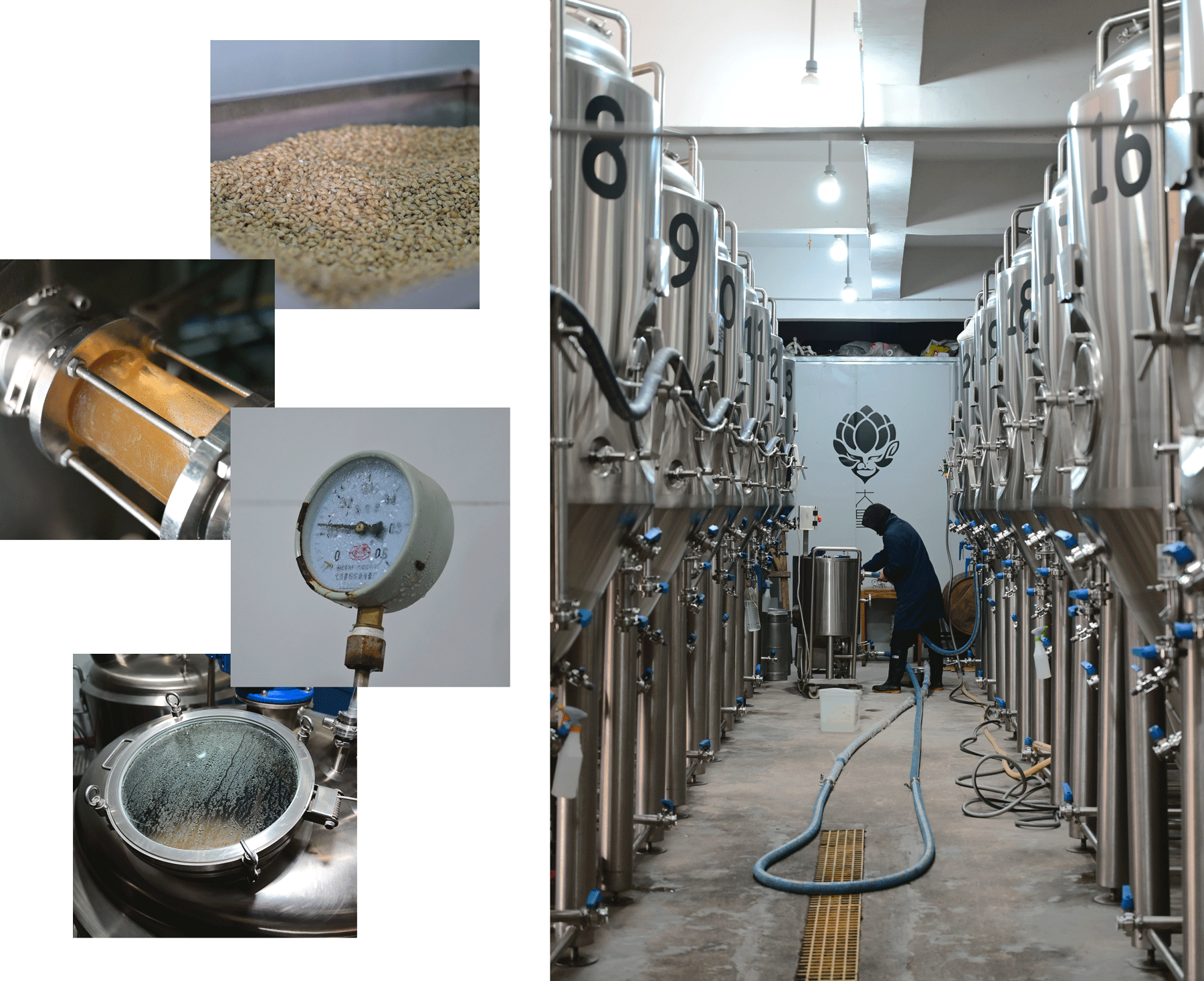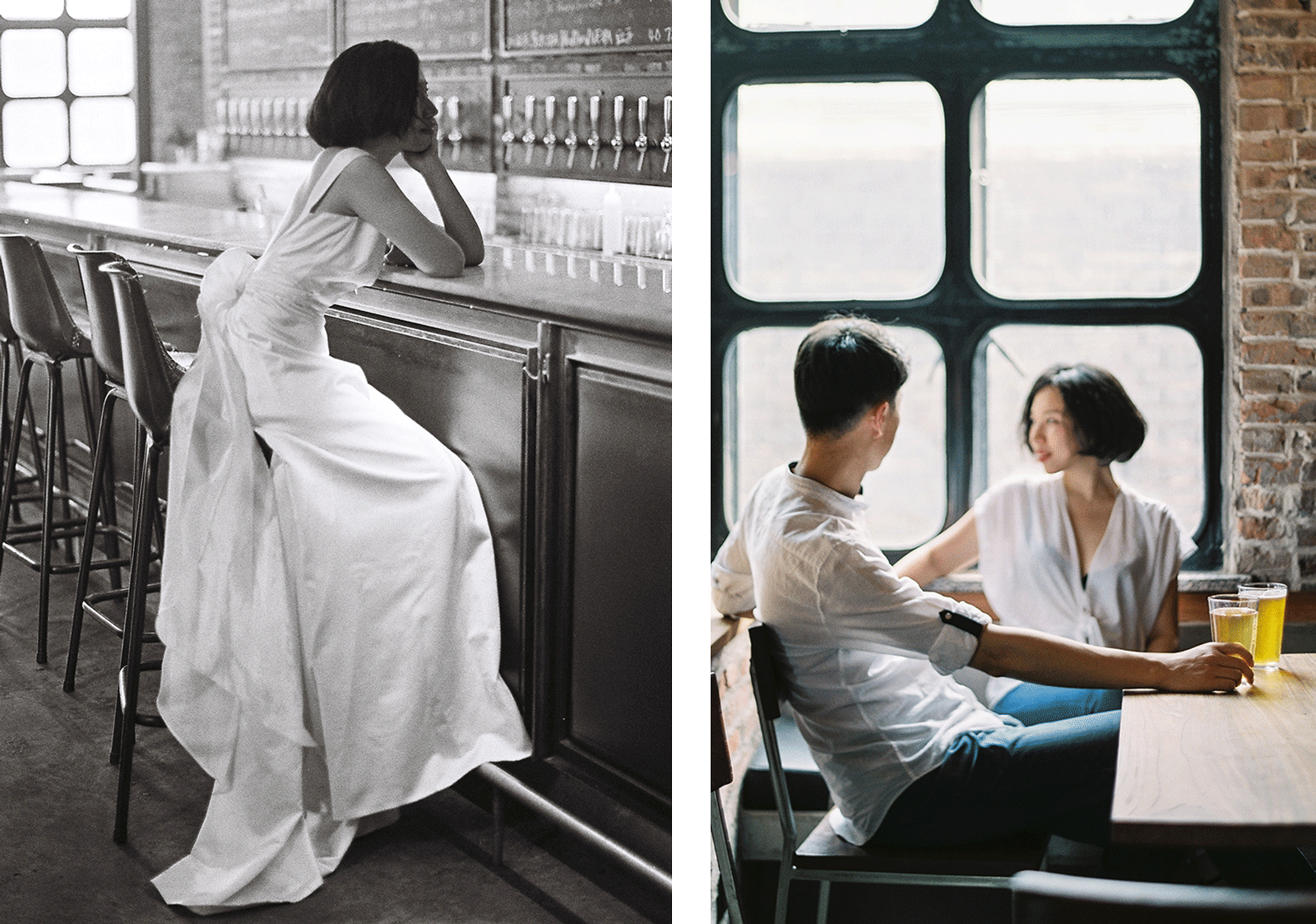
How Women in China Are Tapping Into a Craft Beer Revolution
Kang Xingya was already 53 when she tasted her first craft beer. That first sip in 2012 did more than expand her palate — it catapulted her from retirement into China’s male-dominated craft beer industry.
Over the next decade, Kang built Monkey King, her own craft beer brand, into a thriving business complete with a brewery, two stores, and over a dozen unique brews. And to mark International Women’s Day on March 8, Kang introduced “She,” a Saison beer infused with oolong tea created in collaboration with another female brewer, Zhou Taiyang.
“The goal is to break stereotypes and encourage more women to appreciate craft beer,” the 64-year-old based in Guiyang in the southwestern Guizhou province tells Sixth Tone.
Though Kang conceived this initiative with fellow women brewers in Beijing to empower more female professionals, the project was delayed amid the pandemic. But with its launch, Kang hopes “She” will inspire not only a greater appreciation of craft beer but also encourage more women to join and innovate within the industry.
Despite craft beer debuting in China only in 2008, with brands like Master Gao and Boxing Cat leading the charge, the industry has rapidly grown in popularity. Since 2014, more craft beer brands have emerged in larger cities such as Beijing, Shanghai, and Hangzhou.

According to a Beijing-based research company CICC, the craft beer market is projected to grow from 30.1 billion yuan ($4.2 billion) in 2018 to 134.2 billion yuan by 2025, increasing its share of the beer market from 5% to 17.2%.
This surge is being driven in large part by growing demand from young Chinese and women. While popular craft beer brands like Taste Room reveal that women now account for half of their clientele, female craft beer enthusiasts are also achieving recognition, with some even winning awards at national brewing contests.
According to Kang, the increase in female participation extends beyond consumption, with more women taking on roles in brewing, management, and bar operations. “At trade fairs and beer festivals, I see women becoming increasingly visible in the industry,” she says.
Last year, she also initiated Women Society, an organization aimed at supporting the growing number of women entering China’s craft beer scene. So far, Women Society has distributed “She” craft beer to over 80 bars in more than 20 provinces across the country. With over 80 members, the organization plans to collaborate with more female brewers on similar initiatives.

Crafting change
With “She,” Kang hoped to subvert the industry stereotype that women prefer fruit-flavored beers. “She” avoids fruit elements altogether, offering an alternative profile — a Saison beer enhanced with the nuanced flavors of oolong tea.
“Characterized by a high alcohol content but low bitterness, ‘She’ is easy on the palate,” Kang explains.
According to Kang, choosing Saison — a type of pale ale — for “She” reflected its historical association with female brewers in Belgium who used surplus grains to brew beer during the peak farming season in summer.
In their quest to capture the unique aroma of oolong tea, Kang and her team first attempted to use loose tea leaves in the brewing process. But the leaves expanded on being heated, leading to a blockage in the brewing equipment.
“Fixing the issue required several hours of dismantling the pipes. It even led to the workshop being flooded,” recalls Kang, adding that it took her and partner Zhou over a month to perfect the brew.

Though challenging, Kang loves every minute of the brewing process. At her brewery in Guiyang, her day doesn’t end until 9 p.m., sometimes far later. Her responsibilities span from grinding malt to working atop 3-meter-high platforms, and meticulously adding yeast into the fermenter.
She recalls an instance where she brewed a lager in a pub that failed to ferment as expected. She ended up spending three consecutive nights in the bar. “Brewing beer is like giving birth,” says Kang. “I think of beer as my baby, and when it finally ferments, it feels like life is slowly growing. It’s very exciting.”
Kang also believes that encouraging more women to accept and enjoy craft beer is a gradual process. She suggests introducing women to craft brews that match their taste preferences, such as sweet fruit beer, wheat beer, pilsners, and pepper flavors, to cultivate their palates.
“It’s like some people can’t handle hot peppers right away, but gradually they can acquire the taste,” she says, adding that a lager craft beer she created in 2017 still remains popular because it includes elements of pepper, a favorite among many Chinese.
According to Guo Jing, who co-founded the Gou Taproom in Beijing, most of her female customers prefer IPAs over fruity beers. “Distributors often recommended fruity beers to me, assuming that’s the flavor that women want,” says Guo, 34.
She also believes that the percentage of women in the brewing industry is also on the rise: In the past, most bars were owned by men, but now an increasing number of managers or owners are women.

Abroad, women have already made inroads into the brewing industry. For instance, the Pink Boots Society in the U.S., established in 2007, aims to empower and encourage more female professionals in the alcohol industry.
“There are many exceptional women behind various brands whose efforts deserve recognition. Women Society can provide such women the necessary support and motivation,” says Fu Xin, who opened a brewpub in Kunming, the capital of southwestern China’s Yunnan province.
“Though it feels like a solitary struggle at times, having sisters who support and work together towards achieving their goals can make all the difference.”
Much like its vast food culture, China’s craft beer scene offers flavors unique to each region, according to Yan Wen, a 36-year-old craft beer enthusiast and tech employee. In Guiyang, beer aficionados can enjoy ginger-flavored brews, whereas Yunnan is known for its mushroom-based craft beers.

“Beer is diversified, offering something for everyone. I enjoy a touch of pepper in mine, so I add some during brewing,” says Kang.
She encourages brewers to make beers they are passionate about, even if some flavors are unusual. For example, a unique beer in Yunnan is made with beef tripe. While she knows most people might not like it, Kang is excited to try it herself.
Her expertise spans a variety of beer styles, each differing in alcohol content, bitterness, and color. And as a dedicated brewer, she savors a glass of craft beer daily, a ritual that occasionally leaves her mildly tipsy, a sensation she warmly refers to as “the best.”
“When you are worried, you can relax a little, and if you’re in a good mood, a glass of beer can enhance it,” she says. “Sometimes it’s difficult to talk about certain topics when we are sober, but a moderate amount of alcohol can help you open up and express deeper emotions.”
Editor: Apurva.
(Header image: Kang Xingya at her brewery in Guiyang, Guizhou province, 2023. Courtesy of Kang Xingya)










